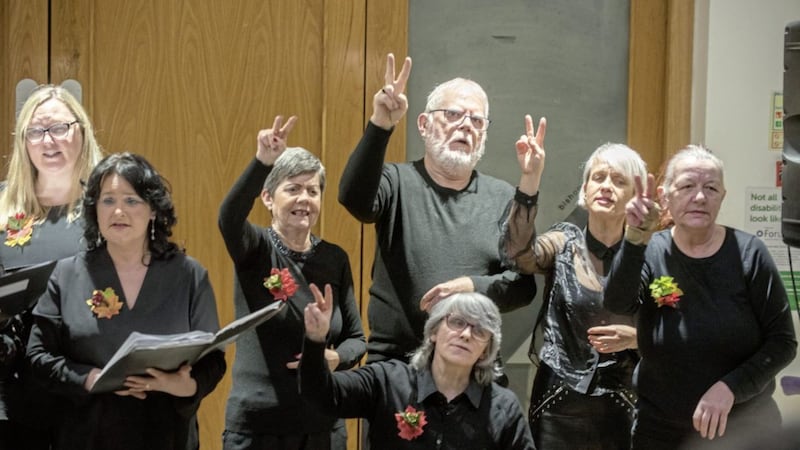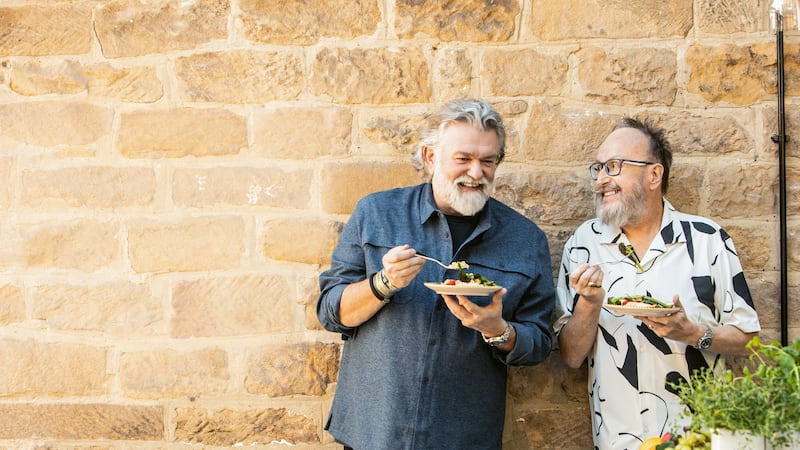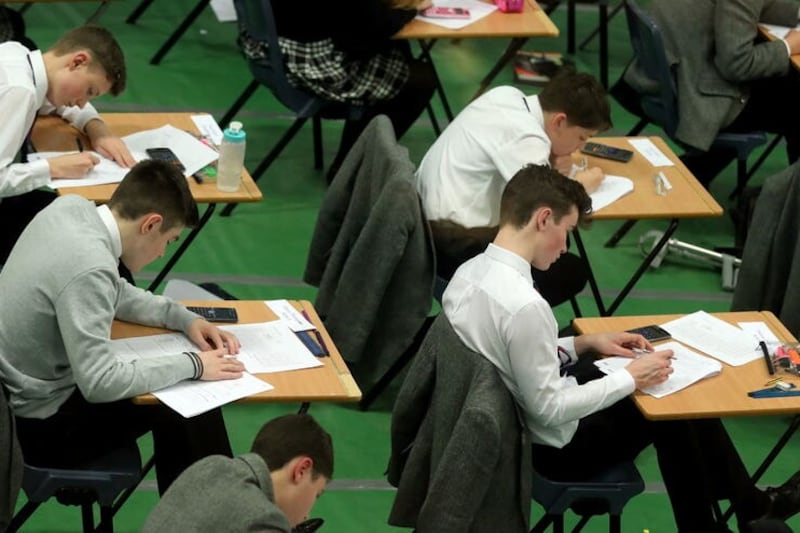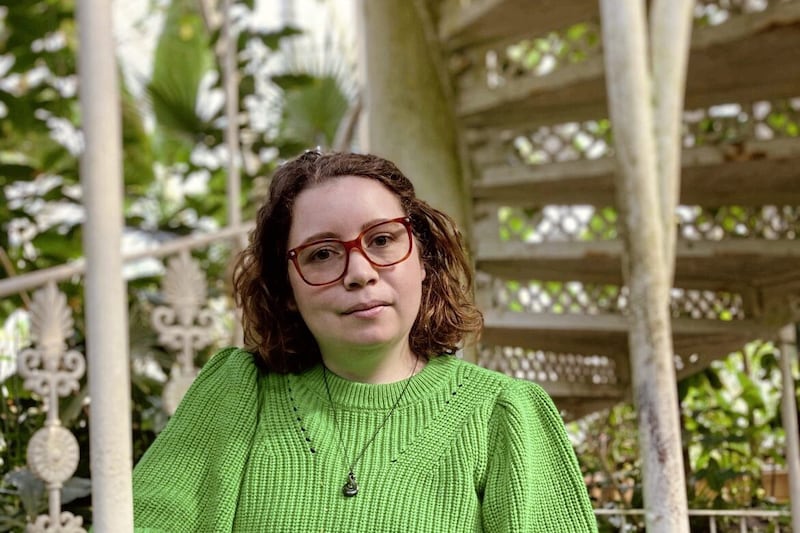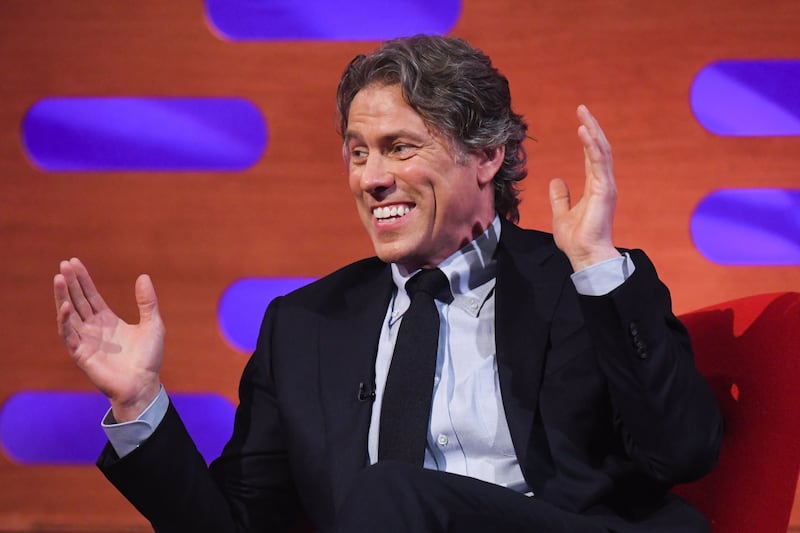IMAGINE a choir with no sound, yet whose members still raise the roof with the joy of music; a choir where the melody radiates through faces and vibrates through fingers and toes.
For Foyle Deaf Association's sign language choir, Deaf Voices, the rhythm is all in communicating the lyrics through signing in ISL (Irish Sign Language) and its members perform with a passion – whether alongside a singing choir such as Voices of the Foyle, or with just a simple backing track.
It has proved a harmonious marriage of sound and signing, while bringing the talent of a marginalised deaf community – and, importantly, the language itself – centre stage.
Among the group's growing fan base is Gary Lightbody, whose Lightbody Foundation included the choir in a recent share of its £70,000 for seven charities funding, while a donation of £5,775 came via the Arts Council's (NI) Older People's Programme, promoting positive mental health.
The double financial boost has proved perfect timing ahead of Deaf Awareness Week in May, with the aim to bring sign language right into the public domain, says Michelle Grogan, volunteer with Foyle Deaf Association, director of the choir and sign language teacher and student.
"We have big plans and so are delighted to receive this funding because the choir brings so many benefits to members of the deaf community and also to the hearing members of our audiences," says the Donegal-based mum-of-two, who first started signing classes as a hobby – she now holds level three in BSL (British Sign Language) and is currently studying for level four ISL.
She formed the choir group three years ago, first singing songs to a small group of women who would follow her lips, but after receiving funding last summer, the project has been developed into a properly polished signing choir which boasts a number of events on its books.
“The choir project stands out because it integrates deaf and hearing people, while reducing stigma and showing sign language in a positive light,” she says. "Our performances also give deaf audience members something they can actively participate in, which is so important, while hearing audiences can see the skills of those on stage – and hopefully that will kindle an interest to learn more.
"Unfortunately, there isn't enough access to courses in Northern Ireland and that has resulted in a shortage of interpreters and teachers – and ultimately, the number of people who can sign."
Foyle Deaf Association (FDA), which celebrated its 10th anniversary last year, is helping redress the balance for deaf people in the area by running deaf awareness courses and also teaching higher level ISL courses which generally aren't available at further education colleges in Northern Ireland.
To put the problem into some sort of context, there are only three ISL interpreters working in Northern Ireland – BSL numbers are significantly better, but still “nowhere near enough” – adding to the social and economic isolation felt by around 5,000 ISL users across the north.
“Students have to travel to England for interpreter training which takes two years part- time, so it’s not easy – it’s ridiculous, really,” says Michelle. “Even training beyond levels one and two is very difficult in both BSL and ISL in Northern Ireland, but the FDA is trying to rectify that by teaching level four and, hopefully – subject to funding – level six and interpreter training sometime in the future.
“With the right communication support, deaf people can contribute more and everyone benefits. We just want to see equality with regard to access to services – we’re not talking about anything extravagant, just the same access as everyone else. There is a proposed Sign Language Bill for Northern Ireland, which would help enormously, but it is yet to be passed.”
Keeping all this on the public radar is the choir which also serves as a much-needed social outlet for enthusiastic members, among them, Patricia Clarke, FDA vice-chair, and Siobhan McKeever, treasurer.
Derry grandmother Patricia will turn 70 next year but looks half her age – she good-humouredly suggests this is down to “a good positive attitude” – as well as having to use her facial muscles more than most hearing people.
We are having a video chat, with Michelle interpreting, and it’s going pretty well until a fire alarm goes off in the middle of it and Patricia jokes (through sign) that the noise doesn’t annoy her in the slightest…
Following a successful cochlear implant, though, she does have some hearing and says the operation has given her more confidence in following the choir music.
“Music was always in my family and I was always jealous of family members singing when I was a child because I couldn’t get involved,” she says, signing speedily to Michelle who interprets and relays back to me, barely missing a beat. “Then, I realised I could get involved by learning the song and its emotions.
“My husband is an opera singer and when I first went to the opera, before I had the implant five years ago, I felt the emotions and watched the body language and facial expressions and it was an amazing experience.
“I had hearing until I was two when I took measles. The operation has helped a lot, but I had it late in life and my brain is still adapting. If you have it when you’re young, it works much better.”
Now teaching signing to her eight-year-old deaf grandson who attends mainstream school, Patricia believes sign language should be part of the school curriculum and should also be available as a GCSE subject.
“I only learned to sign at 21 and it changed my life,” she says. “At ‘Deaf School’ in Dublin, we weren’t allowed to sign because they thought it would impede our speech, but, thankfully, that has all changed and there is now total communication, sign language included.”
Siobhan (55) became deaf after contracting German measles as a baby, but attending a school for the deaf in Dublin was a different experience for her, as she learned ISL there as a young student – although, today, she is proficient in BSL as well.
“I think the school system failed a lot of deaf people,” she says. “I came out with hardly a basic education but I went back to college and became qualified in Maths, English and Computer Skills and I’m soon starting an accounting course.
“It’s been a struggle, communicating with people who don’t sign, as I find lip-reading difficult, so I rely a lot on gesture. In the choir, though, it is wonderful to sign with other people and communicate that out to an audience.
“The facial expressions, the body language, the way I feel the music through vibrations in the floor… it’s a beautiful experience. It’s a new lease of life.”
Lightbody funding will help secure that feeling of wellbeing even more for the FDA’s 30-plus members, through proposed new music lessons, song-writing classes and the development of more projects for deaf children.
“People presume music and performance are closed doors for deaf people, but that’s not the case,” says Michelle. “And something like dance and drama would be fabulous – we have lots of exciting ideas on the table to allow the deaf community to be heard more and for sign language to be celebrated as the vibrant, beautiful language it is.”
:: Foyle Deaf Association is looking for new members – contact them via Facebook or email foyledeaf.info@gmail.com
